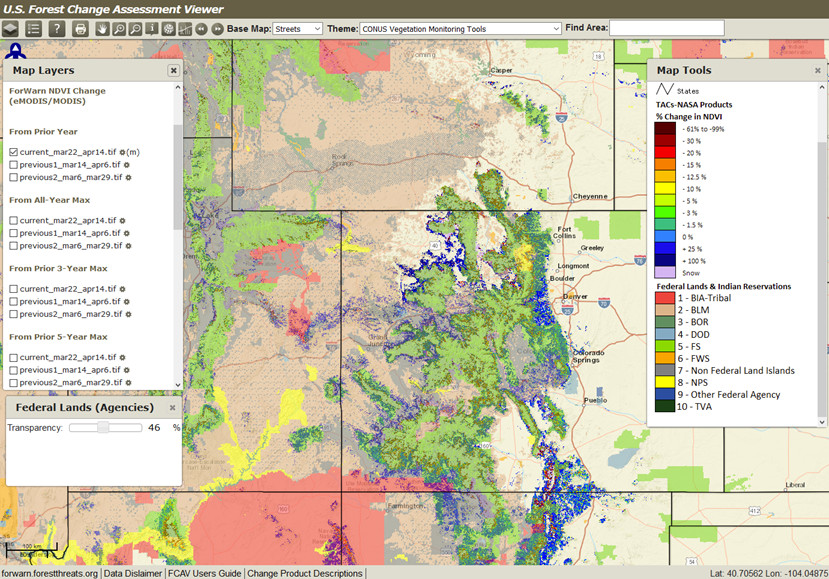The USDA Forest Service’s ForWarn system provides near-real-time tracking of vegetation changes across landscapes in the United States, for both monitoring disturbance events as well as year-to-year variability. This system helps with wildfire, pest management, drought and many other forest management tasks.
Technically, ForWarn is a vegetation change recognition and tracking system that uses high-frequency, moderate resolution satellite data. It provides near real-time change maps for the continental United States that are updated every eight days. These maps show the effects of disturbances such as wildfires, wind storms, insects, diseases, and human-induced disturbances in addition to departures from normal seasonal greenness caused by weather. Using this state of the art tracking system, it is also possible to monitor post-disturbance recovery and the cumulative effects of multiple disturbances over time.
ForWarn’s change products show NDVI departure from an eclectic mix of causes including climate stress, variation in the timing of seasons, biotic and abiotic disturbance agents, and successional recovery. At any given time, a complex of causes are often at work coincidentally in a landscape: wildfires often burn when vegetation is drought-stressed, logging and regrowth often occur in adjacent stands, and defoliation from storms or insects can occur in areas of active land cover change. Add to this the complication of year-to-year variability in seasonal transitions, and a landscape can harbor numerous anomalies, some of which have ready explanation while others, especially subtle differences, can remain uncertain.
PAD-US provides federal land ownership data for the ForWarn system and can be seen in the ForWarn interactive web map application.
